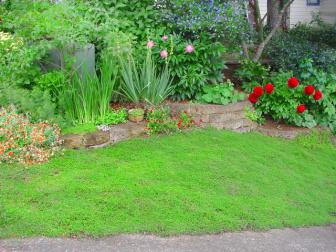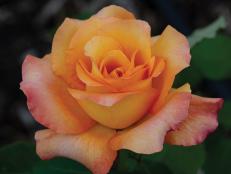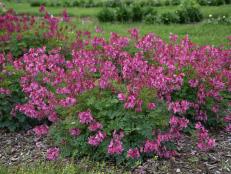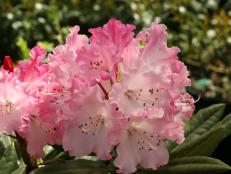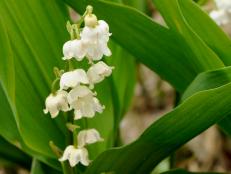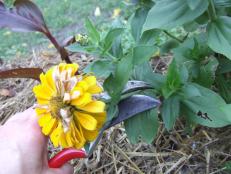How to Grow Liriope
An evergreen perennial, liriope — also known as lilyturf and monkey grass — makes a great ground cover and border plant in the landscape.
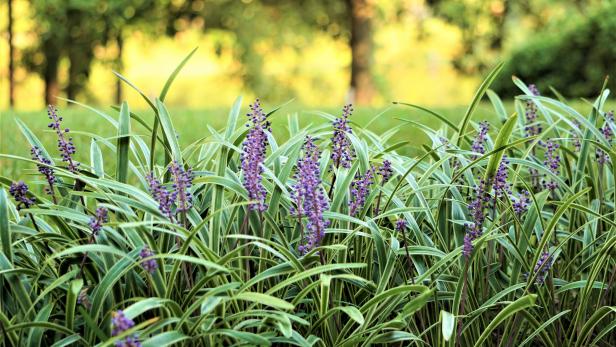
Shutterstock/Ancha Chiangmai
Liriope (Liriope spp.) is a tough, evergreen, grass-like perennial. Also called lilyturf and monkey grass, it has beautified landscapes with deep green or variegated foliage and lavender flowers for generations. Liriope is sometimes confused with its smaller relative, mondo grass, and is often outshined by showier ornamental grasses. However, when you need a combination of beauty, versatility and rugged functionality, look no further than low-maintenance liriope.
How to Use Liriope (Monkey Grass)
L.muscari grows in rather tight clumps. Use ‘Big Blue’ or ‘Variegata’ as edging plants to neatly outline walkways, or as border grass to define the margins of landscape islands. The clumps stay put without sending runners into adjacent plantings. The name lilyturf comes from its ability to serve as a flowering lawn substitute under certain conditions, however it is not suitable for foot traffic.
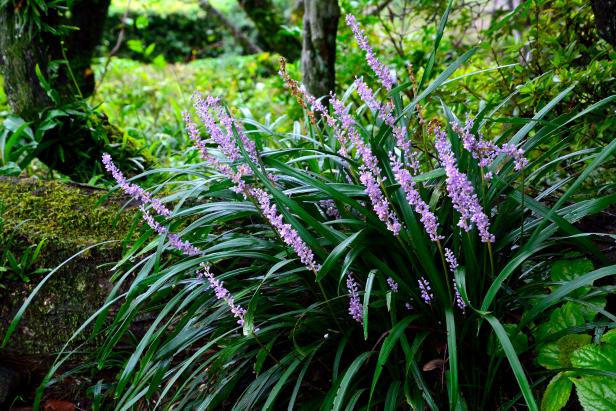
Shutterstock/Big High Mountian
L. spicata spreads to form open colonies. It helps with erosion control on mild slopes and thrives in the shade beneath shallow-rooted trees. Plant ‘Silver Dragon’ as a silvery highlight mixed with other spreading ground covers like mondo grass.
How to Grow Liriope
Grow all types of liriope in full sun to partial shade, and in moist, well-drained soil. Established plants can grow in high heat, excessive humidity and drought-prone areas.
18 Tough Groundcovers 18 Photos
Tired of mowing that lawn? Why not replace expensive, high-maintenance sod with an easy-care, environmentally-friendly groundcover?
In deep shade, the leaves grow long and thin, and plant growth slows significantly. The evergreen foliage declines in severe cold. Cut liriope plants back to the ground in later winter to make way for fresh new foliage in spring.
Propagating Liriope
Propagate by division and transplanting. Divide L. muscari by lifting plants in spring and using a spade or garden knife to cut sections with at least 3 to 5 shoots each. Transplant L. spicata plants individually from areas of high density to new or low-density areas.
How to Care for Liriope
Liriope are low-maintenance plants with few problems. Slugs and snails may chew on the foliage but rarely do these mollusks cause significant damage. Pick them off as you see them, and employ slug traps if damage becomes excessive.
Too much rain or overhead irrigation may lead to anthracnose infection — a fungal disease that causes brown leaf tips followed by yellowing and dieback of foliage. Other diseases caused by excessive moisture include leaf rot, root rot and crown rot. Plant only in well-drained locations and avoid overhead irrigation to virtually eliminate these problems.
Types of Liriope
Liriope comes in clumping or spreading forms, and deep green or variegated foliage. In late summer tiered whorls of flowers are followed by black berries in the fall. Though they differ in appearance, they have similar growing needs and are treated similarly.

Walter's Gardens, Inc.
Clumping 'Big Blue' liriope is a perennial with grassy "straps" that grow up and spill over, like a fountain. Hardy in Zones 5 to 10, it opens lilac-purple blooms in summer.
Liriope muscari ‘Big Blue’
- Zone: 5-10
- Height: 12" to 18"
- Spread: 12" to 24"
- Bloom Time: late summer
- Bloom Description: lavender flower spikes
- Sun: full sun to part shade
- Water: medium
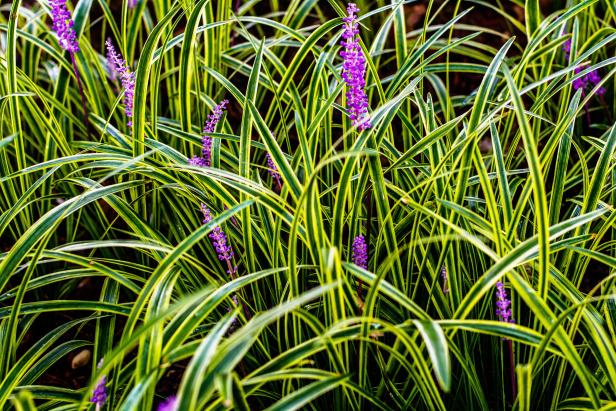
Shutterstock/Elana Rodina
Liriope muscari ‘Variegata’
- Zone: 5-10
- Height: 12" to 24"
- Spread: 12" to 24"
- Bloom Time: late summer
- Bloom Description: purple flower spikes
- Sun: full sun to part shade
- Water: medium

Shutterstock/Phoebe P
Liriope spicata ‘Gin-ryu’ (Silver Dragon)
- Zone: 4-10
- Height: 8" to 18"
- Spread: 8" to 18"
- Bloom Time: late summer
- Bloom Description: pale lavender flower spikes
- Sun: full sun to part shade
- Water: medium

.-Battle-on-the-Beach-courtesy-of-HGTV.-.jpg.rend.hgtvcom.196.196.suffix/1714761529029.jpeg)





